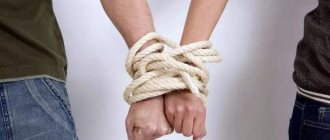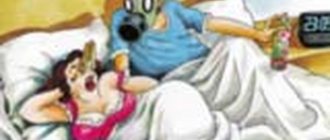- about the author
- Recent publications
Bondarev Andrey
I am an expert on chemical dependency. Executive Director of the Renaissance Foundation, Perm
Bondarev Andrey recently published (view all)
- Drug addiction treatment Perm Narconet – reviews – 07/19/2019
- Treatment of drug addiction and alcoholism Solikamsk - 04.04.2019
- City selection - 04/03/2019
Heroin addiction is understood as the rapid adaptation of the human body to a narcotic substance, expressed in the inability of a person to refuse taking the drug. A person experiences an incredible need to receive the next dose of opioid, and this need at a certain moment becomes the leading driving force of life. Each time the addict, in order to get the desired effect of euphoria and satisfaction, is forced to increase the dosage.
General information
Heroin was used as a drug for a long period of time until doctors noticed a negative effect - persistent psychophysical addiction. The toxic substance is included in the list of the most dangerous drugs, since 2-3 doses are enough to develop a persistent and painful addiction.
Chronic abuse leads to severe somatic pathologies and complete degradation. According to statistics from the World Health Organization, opium addiction has an annual increase and an extremely high mortality rate.
Treatment of heroin addiction in Israel is the optimal and correct solution
Israeli specialists provide treatment for heroin addiction using highly effective techniques:
- 12 Steps Course . Carrying out step-by-step therapeutic measures, working with a psychologist, assistance in social adaptation, individual lessons.
- Speed regulation (fast detoxification). The technique consists of quickly cleansing the body of drugs and rehabilitation.
- ANRI-recovery. Stopping opium receptors, after which the euphoric effect and pleasure from taking heroin disappear.
- Weissman's method. Patients undergo a thorough detoxification course and take the drug Naltrexone.
The treatment method is selected taking into account the patient’s stage of addiction. Moreover, the rehabilitation course includes several methods, since complex treatment is required to successfully combat heroin addiction. Moreover, coding and long-term treatment with chemicals are methods that Israeli specialists prefer not to use in practice.
Yoga, fitness, art therapy, relaxation, walks along the coast, and short excursions to places of interest are successfully used as additional and alternative treatments.
History of creation
Heroin (diacetylmorphine) is part of a group of semi-synthetic opiates, in which the main active ingredient is the poppy hypnotic alkaloid. In 1804, the German pharmacist Friedrich Wilhelm Adam Serturner named this alkaloid morphine, in honor of the ancient Greek god of dreams.
Diacetylmorphine was first discussed in 1874. The Englishman A. Wright was the creator of the drug, the active substance of which contained morphine. In 1898, a German pharmaceutical company released the first batch of cough medicine under the brand name “heroin”.
Heroin was released as an alternative to morphine and was freely sold in pharmacy stalls. The action of the drug helped to successfully cope with coughing attacks, since morphine inhibited the cough center in the brain.
The drug had no age restrictions for use. Short-term use was not thought to cause significant cognitive impairment. And the resulting moderate euphoria is characteristic of many sedatives. Heroin production displaced morphine because the cheaper alternative was believed to have no negative effects.
The German company actively advertised the drug as a universal remedy for all diseases. A successful marketing ploy and positive reviews from doctors led to the active spread of heroin.
Demand for the drug grew, production worked at an increased pace, supplying it to 22 countries. Since 1922, diacetylmorphine began to be produced in other countries, including the USSR, since the German company never received a patent.
The medical community expressed its first concerns after the research. It turned out that taking syrups and tablets causes the accumulation of morphine in the liver. Heroin began to be administered intradermally to patients, believing that such use did not cause addiction. This misconception led to the explosive spread of morphinism.
The first ban on the free sale of heroin was introduced by the United States in 1914. Doctors noticed that patients take the drug uncontrollably, and after stopping it they become aggressive. Since 1924, in the USSR and the USA, a ban on the narcotic drug was introduced at the legislative level, even for medical purposes.
In other countries, heroin could be purchased for medical reasons until the age of 30. Germany introduced a complete ban on sales in 1971.
Important! Legal production of the synthetic drug in limited quantities is allowed to chemical companies only for research.
How to cure a drug addict
The recovery process is long, associated with many difficulties, aimed at complete abstinence from the drug. Terence T. Gorski worked as a chemical dependency counselor for 17 years. He systematized his observations and created on their basis a developmental model of recovery (DMM), which he described in his book “The Path to Recovery.”
Gorski believes: results are possible with systematic, purposeful movement towards the final goal. RMV involves several stages.
| Stage | Peculiarities |
| Transition | It involves changing your lifestyle. The patient must admit that he has lost the ability to control his life and is powerless over his addiction to heroin. Awareness is the first step on the path to recovery. |
| Stabilization | The addict learns to restrain himself from taking the dose. It's difficult for him to do this. The desire to stop may give way to breakdowns. The addict is in a “mental fog.” The stage lasts 6-18 months. |
| Early recovery | The first internal changes are observed. Physical cravings weaken. A person learns to cope with problems without turning to opiates. Periodically, he begins to experience remorse, shame, and guilt. |
| Average recovery | The stage associated with external changes. Aimed at correcting relationships with others (friends, family). Associated with thoughts about career. A former drug addict understands: he must be responsible for his own actions and for those close to him. This is a period of searching for balance in life. |
| Late recovery | Awareness of vital things. The patient analyzes problems arising from his childhood, learns to abstract from them, and overcomes obstacles caused by current problems. |
| Maintenance | Balanced life, personal growth. The addict realizes that the disease cannot remain in the past. She'll come back again, it's worth trying heroin. His task is to enjoy life as it is now, and not to forget about the successes achieved in the fight against drug addiction. |
On the path to recovery, it is not medications that play an important role (they help relieve pain), but work on oneself, changing guidelines, and interacting with society. All stages of the presented model are important. Missing even one of them will result in failure.
Effect on the body
Despite widespread publicity about the dangers of the hard drug and the rapid development of addiction, the clandestine production of diacetylmorphine continues, and the problem remains relevant for all countries.
The pituitary gland in the brain synthesizes β-lipotropin, which is converted into an endogenous (natural) opiate. The central nervous system regulates its secretion and uses it as protection. Stress or pain causes activation of the defense mechanism - increased production of the hormone. Heroin is structurally similar to endorphin. But biological active substances affect a specific receptor and, after synthesis, are quickly destroyed by enzymes.
With prolonged exposure to the drug, new neuronal circuits and connections are formed, which distort mediator mechanisms and lead to the formation of pathological functional systems.
Egorov, A. Yu. Textbook for students of higher and secondary pedagogical, psychological and medical educational institutions
Physical symptoms
The systematic intake of a toxic substance leads to the activation of enzymes that destroy it. The body begins to demand a second dose. Physical addiction to the drug develops. When a substance breaks down, a powerful release of toxins occurs, which poison cells and change the course of biochemical processes.
Autonomic reactions after taking the drug:
- Decreased perception of receptors (or complete cessation of reactions in response to stimuli from the external and internal environment);
- Toxic damage to blood cells causes depression of the respiratory center;
- Persistent constriction of the pupils (the reaction does not change when the light flux changes);
- Inhibition of the secretory function of the gastrointestinal tract;
- Depression of consciousness - a person feels peace or euphoria (visual hallucinations are possible);
- Excessive secretion of vasopressin - a sharp narrowing of blood vessels occurs, and urination also decreases;
- The rate of metabolic reactions decreases, body temperature becomes lower.
Diacetylmorphine has a pronounced sedative effect, so euphoria is quickly replaced by a feeling of drowsiness. Gradually, the body becomes tolerant to the drug and no change in consciousness occurs. The received dose becomes a means to relieve physical cravings.
Cognitive changes
Heroin penetrates the brain's protective barrier without interference. The breakdown of the substance has a toxic effect on the central nervous system, which regulates all mental processes.
Changes in the cognitive sphere of personality:
- Selective perception - the drug causes the formation of a dominant focus of excitation in the cerebral cortex, inhibiting other processes. Under drug intoxication, the perception of: objects, shapes, distances changes;
- Thinking – reactions are slow, delusions and fantasies arise;
- Memory – partial or complete amnesia;
- Consciousness is narrowing or darkness. The person becomes easily suggestible and disoriented in his personality.
Important! Heroin disrupts the organized functioning of the entire central nervous system. A person ceases to be aware of the reality of what is happening, since mental processes become uncontrollable.
Why you can’t undergo rehabilitation at home
Every addict who wants to break their heroin habit will go through withdrawal. This is due to the depletion of the supply of internal pain-relieving mediators. If a new dose of the drug does not arrive, the body will not be able to block natural pain, and a period of severe suffering will begin for the patient.
At home, the patient may die. Severe pain provokes heart attacks, strokes, hypertensive crises, collapse and shock. During withdrawal, the patient may harm himself.
At home, there is no way to monitor the patient’s vital signs. Such addicts constantly need to have an electrocardiogram done, a biochemical urine test and, most importantly, psychological help after the end of withdrawal.
At home, it is almost impossible to create truly good conditions for quitting heroin use. Only highly motivated and strong-willed people with a short history of use can cope with withdrawal symptoms on their own.
Drug effect
Heroin is three times stronger than morphine, which causes rapid mental and physical dependence. Once in the bloodstream, the opioid reaches the brain within a few seconds, activating sensory receptors.
Feel:
- The face becomes swollen, the skin on the body begins to itch (itch).
- Breathing becomes heavy (lack of air).
- Mental reactions are slow and drawn out (lethargy).
- The heartbeat becomes slow, and insufficient blood volume begins to flow to the organs.
- The stomach begins to reflexively eject its contents (vomiting).
- Urination becomes uncontrollable and voluntary (sphincters are relaxed).
All sensations pass within a few hours, after the heroin has completely disintegrated.
Get help now
Do any of your relatives or friends have an addiction? Have you tried in every possible way to help, but as a result the person still returned to his past life?
You are not the first to encounter this problem, and we can help you.
We guarantee anonymity, we will persuade you to undergo treatment, and we will help you choose a center.
Call us
+7
or
Call me
The influence of heroin on the human psyche and psychological dependence
At the physical level, the opium drug simply numbs the body and paralyzes human feelings.
As for the mental state, drugs are a chemical escape from the harsh realities of life. A certain key to a “quick high” that allows you to relax, but takes away your health and even life. Drugs allow you to perceive the world differently, but this does not last long. Such an escape is false, because in fact nothing changes, and the person, having come to his senses, begins to understand that everything is in its place, only the nervous system has aged. Often, after an encounter with heroin, living in society becomes much more difficult.
The main intellectual center of a person is the brain. The isocortex - the new cortex - is its kind of processor. This is the area that distinguishes the human brain from the brains of animals. The main difference is that a person has the ability to perceive himself as an individual. Animals have no sense of their own existence.
It is for self-perception, according to neurophysiologists, that the parts of the brain located in the forehead are responsible. This allows a person to stand out from the crowd and control his activities.
When taking heroin, this part of the brain is affected first.
Those who abuse drugs lose self-control and cease to adequately evaluate their behavior.
Drug addicts often start lying and at the same time it seems to them that no one notices. They lose their sense of tact when communicating with other people, they can behave familiarly, create conflict situations, but they are always confident that they are right.
Gradually, the drug addict turns into an egoist, for whom other people are just a means of finding money; their personal problems do not interest him at all. A person begins to believe that everyone around him owes him something, but he is always right, and a feeling of resentment arises.
Outside of withdrawal, drug addicts do not admit that they are sick. Any persuasion to undergo treatment seems ridiculous to him. The inability to evaluate one's own actions leads to a failure to understand that one will have to pay a lot for such temporary pleasure.
Drug addicts can use the help of loved ones and doctors only to temporarily eliminate withdrawal symptoms, reduce the dose, that is, to “rejuvenate” and start using heroin in a new way.
Another change in the psyche of someone suffering from drug addiction is the inability to control their emotions and feelings. Young people become too irritable and are haunted by feelings of anger. They can yell over any little thing, wave their arms and laugh for no reason. The mood changes for no reason, and changes at lightning speed. Closedness alternates with obsessive sociability. Over time, a bad mood appears more and more often, and a good mood replaces it quite rarely.
In psychiatry, such emotional imbalance is called weakness. It often affects elderly patients with cerebrovascular diseases. After about two or three years of taking heroin, the addict’s weakness becomes more and more pronounced, and mental disorders begin, in particular hallucinations, epilepsy, and delirium.
Heroin addiction often ends in high-grade dementia - dementia. At this time, the nervous system does not work without a dose of heroin, but very few survive to this stage.
Signs of a drug addict
A person who uses opiates can be identified by their appearance and behavioral reactions. Heroin addicts do not experience motor dysfunction.
Appearance of a drug addict:
- pallor and dry skin. In experienced drug addicts, the skin becomes yellowish;
- there are multiple wrinkles on the face (looks much older);
- dull and brittle hair;
- a significant part of the teeth is damaged (crumbling, breaking off) or missing, the enamel is thinned;
- painful thinness.
When a drug is injected into a vein, peculiar “paths” are formed—a compaction along the course of the vessel. Another reliable sign of a heroin addict is pupillary miosis (constriction). The symptom appears only in the initial stages.
Diacetylmorphine causes an allergic reaction that is typical of opioids. A person experiences unbearable itching, but only of the upper half of the body. More often, the reaction manifests itself on the face - the skin becomes purple, and there is unbearable itching of the tip of the nose. With chronic drug addiction, this symptom gradually disappears. Behavioral (mental) reactions are similar to the initial stage of alcohol intoxication.
Melancholy - an anxious mood can be combined with hysterical forms of behavior, demonstrativeness or gross dysphoric manifestations with aggression towards others.
Goffman A.G. Clinical narcology / A.G. Goffman. – M.: Miklos, 2003.
Possible heroin relapse
Statistics from drug treatment institutions and rehabilitation centers around the world confirm that only a tenth of drug addicts are ready to forget about heroin forever, and 90% of them, even after detoxification, return to using drugs.
Bitter, but true. Why do young people return to heroin addiction? This happens for several reasons, often depending on the mental state of the drug addict himself:
Decrease in energy level.
The drug addict is used to being in conditions of heightened tension. For him, carelessness and a sudden burst of energy are the norm. When a person returns to normal life, it seems to him that he is somehow loose and inhibited. He wants energy drive.
Memories.
Our memory is designed in such a way that bad things are forgotten very quickly. The human psyche pushes the unpleasant moments of life beyond the level of consciousness, transferring them into the unconscious sphere.
Thus, the vile memories of “withdrawal” are moved away after a certain time, but the feeling of enjoying heroin remains in the memory forever.
Loneliness.
If a person stops taking a drug, he is left alone with himself. You cannot contact those who remain in the heroin community, there are simply no others. Old friends now have their own interests: study, family, work. Therefore, a former drug addict who has completely stopped thinking with his head has to arrange his life in a new way.
Society, to put it mildly, does not quite trust him, and this isolation can cause a relapse.
Offended pride.
Loving yourself is not depravity at all. This is just a desire to prevent the individual from self-destructing.
It’s hard for a former drug addict to realize that he lost so much time, and now no one needs to communicate with him. Many people face such situations.
Therefore, they isolate themselves from the outside world and perceive any moral teaching as an insult to their pride. That's when a return to the heroin party may occur. In the company of drug addicts, he begins to feel like a fish in water.
"Just this once."
It is a myth that you can take heroin occasionally and not become addicted to it.
Many drug addicts want to get rid of systematic use of heroin, but are thinking about “breaking up.”
Drug dealers insist that one-time use of the substance is possible. However, you need to forget about heroin forever. Thinking that “just once” can be the main reason for returning to drugs.
Harm from drugs
The main danger of heroin is the rapid development of mental dependence syndrome and the gradual reactivity of the body. Physical craving for an opiate is accompanied by neuroses in the absence of a “dose”.
The chronic stage of drug addiction leads to intellectual-mnestic disorders and various trophic disorders. Heroin destroys neural connections in the brain that cannot be repaired. In place of dead neurons, necrotic foci are formed, which are diffusely located over the entire surface of the brain.
Diacetylmorphine, like other narcotic substances, has a toxic effect on all organs and systems. The life span of drug addicts is quite short. Death occurs from secondary infections (HIV, hepatitis) or concomitant pathologies.
Note! Heroin is a synthetic poison that easily penetrates all barriers in the body.
Effect
After heroin enters the body, each person will have an individual reaction. Drug addicts describe the sensation as similar to an orgasm, lasting about a couple of minutes. As a result of this “high”, the feeling of tension is eliminated. Drug addicts describe that after this a feeling of pleasant heaviness and melting of the bones appears in the body, the person experiences a feeling of detachment from the events happening around him. In such a state, all problems and difficulties are deprived of seriousness and are pushed somewhere far away. The addict will remain in this state for approximately 5 hours.
From a medical point of view, heroin is a powerful pain reliever and sedative for the nervous system.
The photo shows the consequences of heroin use
All the effects that drug addicts get from using the drug are side effects for doctors:
- Euphoria;
- Excellent, cheerful mood;
- Calmness bordering on drowsiness;
- Relaxation of the whole body, especially the limbs;
- Feeling of warmth and comfort;
- Indifference to the environment.
Unlike other drugs, heroin quickly penetrates the blood-brain protection of the brain and accumulates in it. After penetrating the brain membranes, heroin sheds its disguise and is reclassified as morphine. As a result, it turns out that the difference between morphine and heroin is the presence of a specific shell in the latter, which facilitates the transportation and penetration of the drug into the nervous system structures. After penetration, heroin molecules excite the nervous system, causing all of the above adverse reactions.
Heroin is not capable of causing the development of any disease. This substance, with its influence, leads the body to nervous system aging and exhaustion in a short time. Heroin molecules are similar to particles of endorphins, which in the body act as stimulants and activators of emotional manifestations and intellectual abilities.
Heroin contains much more of these pseudoendorphins than the body needs, therefore all types of neurocellular activity are simultaneously activated, creating chaos and overexcitation. As a result, a significant part of the nerve cells die, dying prematurely. Heroin affects not only the brain, but also other organic systems, causing severe intoxication.
The video shows the first signs of heroin addiction:
Consequences of long-term use
Clinical trials of heroin and its effects on the body have been described in sufficient detail by many scientists. Despite the rapid removal of the substance from the body, the toxic effect is not reduced. Chronic drug addiction leads to the accumulation of opiates in target organs (liver, kidneys).
Effect on the body during chronic addiction:
- degradation;
- complete disorientation;
- anorexia;
- development of mental illness;
- dementia;
- dysfunction of internal organs and systems;
- atrophy of blood vessels;
- decreased immunity;
- abscesses.
Long-term exposure to toxic substances in the brain leads to tissue swelling and acute encephalopathy. Homemade production of the drug, even after a single dose, is fatal.
Consequences
The consequences of heroin abuse consist of the antisocial, inappropriate behavior of the drug addict. Often, drug addicts share a syringe, which leads to infection with hepatitis, viral blood infections or HIV. Gradually, a lot of chronic pathological conditions develop, such as pathologies of the cardiovascular system, metabolic disorders, mental health disorders, pathologies of the liver or nervous system.
Drug addicts rarely live past the age of 30, and most die even earlier due to a heroin overdose. Accordingly, the question of how to get rid of heroin addiction is very acute.
Danger of consumption methods
Regardless of the method of administration, heroin forms a persistent pathological craving and destroys both mucous membranes and internal organs.
Methods:
- intravenous injections - drug addicts often use insulin syringes whose needles are too thin. Foaming of the mixture can lead to an air embolism, which, if not treated promptly, can lead to an emergency (stroke, heart attack). Contact of the solution under the skin causes necrosis of surrounding tissues. Systematic injection of heroin “burns” the veins;
- intranasal - inhalation of the powder destroys the mucous membrane in the nasal passages. A drug addict experiences spontaneous bleeding as the walls of blood vessels become fragile. The nasal septum also collapses over time - calcium is washed out of the body;
- smoking – depression of the respiratory center and destruction of the lungs;
- oral administration - swallowing the solution. Long-term use leads to disruption of the integrity of the gastrointestinal mucosa, and multiple ulcers form.
The drug is also found in chewable mixtures or suppositories for rectal and vaginal administration. The method of administration of the drug affects only the rate of penetration into the bloodstream and its maximum concentration.
What does heroin look like? Appearance of heroin.
The pure form of heroin is a white powdery substance. However, this drug can also appear grayish-pink or brown in color. Sometimes the powder is black. It all depends on how pure the drug is and what ingredients (caffeine, sugar, etc.) were added to pure heroin.
Street dealers (small drug dealers, or in the language of drug addicts - “hucksters”) heroin is often diluted (“badyazhat”) with toxic substances, in particular strychnine. In most cases, such impurities are not absorbed by heroin, so they penetrate into the blood vessels and clog them. This leads to the destruction of human internal organs. Addicts who buy heroin on the street are at risk of overdose, since the concentration of the drug in each bag may be different. By the way, street heroin is called differently: garik, pepper, eych, white, gera, etc.
Drug overdose
Diacetylmorphine is a heavy drug, and it is difficult to predict at what dose or amount an overdose will occur. The body's response to toxic effects is always individual. Severe poisoning leads to an emergency condition and rapid death.
Main reasons
Stage-by-stage development of addiction is the main criterion for overdose. The body develops tolerance, and to achieve the same effect it is necessary to increase the dose of the substance.
Causes of overdose:
- the drug is administered after a short interval - the body did not completely eliminate diacetylmorphine and received a new portion;
- injection of heroin with a large amount of impurities (“dirty”);
- accompanying illnesses;
- taking multiple drugs or large amounts of sedatives;
- taking diacetylmorphine together with alcohol.
Important! Symptoms of an overdose develop rapidly; within a few minutes, clouded consciousness can give way to a coma.
First aid
Proper first aid often saves a person’s life.
Algorithm:
- Call an ambulance.
- Lay the victim horizontally, turning his head to the side.
- In case of vomiting or increased salivation, promptly clean the oral cavity.
- Ensure maximum flow of fresh air.
- Wipe your face with a damp cloth soaked in cold water.
- If the person is conscious, then try to continuously conduct a dialogue.
- Control your breathing and pulse.
If the victim is unconscious and shows signs of life - artificial ventilation, chest compressions. Resuscitation actions are carried out until the first breath or the arrival of a medical team.
Health care
The main goal is to eliminate the effects of opioids and maintain vital organs and systems.
The victim is given an opioid receptor antagonist intravenously for a quick effect. To stimulate the central nervous system and excite the nerve centers, analeptic therapy is started. Infusion therapy helps to quickly remove the breakdown products of heroin.
Consequences of lack of help
The prognosis for life with heroin poisoning is rarely good. Inhibition of the respiratory center against the background of toxic effects leads to acute hypoxia of the brain and the development of a coma. Under the influence of diacetylmorphine, all nerve centers are depressed, and acute heart or kidney failure rapidly develops. If death can be avoided, then in the near future the person will face disability.
How long do drug addicts live?
Typically, heavy users die due to drug overdose or aspiration of vomit. In case of overdose, depression of the respiratory center and heartbeat center occurs. Aspiration of vomit occurs because vomiting is the body's reaction to heroin. Vomiting usually occurs while the patient is lying unconscious. It mechanically enters the respiratory tract and blocks the air flow.
The second cause of death is diseases transmitted through the needle. These are hepatitis C, hepatitis B, HIV/AIDS. Without treatment, due to such diseases, they die within 5-15 years.
If the route of drug administration is injection, then the causes of death of a heroin addict can be sepsis, or pulmonary artery thrombosis, which occurs against the background of phlebitis, endocarditis or myocarditis.
People who are addicted to opiates are the first to lose their place in society. They are not interested in the values we are accustomed to; their minds require a new dose. Therefore, the lives of such people often end in suicide.
Lethal dose
Every year over 150 thousand people die from overdose in Russia. Most die before emergency help arrives. If a person is managed to be transported to a medical facility, then the chances are still negligible - secondary complications incompatible with life develop.
The lethal dose is different for each addict. Narcologists, based on their practical experience, have made the assumption that for hardened drug addicts a single dose of 150-170 mg will be fatal. For a person trying an illicit substance for the first time, the lethal dose depends on the route of administration (approximately 50 to 300 mg).
Important! At any stage of drug addiction, allergic hyperreactions of the immediate type are not excluded. Therefore, there is simply no safe dose of heroin!
Heroin addiction
Heroin addiction is a huge problem for today's youth. To experience pleasure, young people take heroin again and again. This desire to repeat the dose at the beginning of the drug addict’s journey is explained by a sort of vivid feeling of high and satisfaction that is felt during the first cases of use.
Heroin is used intravenously, snorted or added to smoking mixtures. After the first injection (usually an injection into a vein), there will be no dependence
After only 3-4 injections, a person becomes drug addicted, because he cannot stop and independently refuse such pleasant sensations.
The reason is that after the first use of the drug, even a notorious and extremely timid person becomes a kind of king of the party and the most sociable person. In addition, there is sexual liberation.
How to terminate
The longer the addiction, the stronger and more pronounced the withdrawal syndrome occurs. Only drug addicts with little experience can overcome physical symptoms on their own. In other cases, this is impossible without medical assistance. Inpatient treatment is aimed at comprehensive and gradual removal of physical cravings, as well as relief of heroin psychoses.
How to leave
Medication support at home:
- Analgesics.
- Over-the-counter sedatives.
- Nootropics (stimulate cerebral circulation).
- Sorbents (remove toxins).
Detoxification - drinking plenty of warm drinks - will help speed up the removal of toxins.
Otkhodnyak
After heroin breaks down, the central nervous system sends signals about the need for a new portion of the substance. The longer the period of drug addiction, the stronger the physical dependence formed. The addict begins to experience a withdrawal reaction: aggression, insomnia, loss of appetite, complete loss of strength and unbearable pain.
Heroin withdrawal
Drug withdrawal is extremely difficult, especially psychologically for a heroin addict. Drug addicts endure this condition, each individually, depending on their general state of health. There are two ways to survive withdrawal and get rid of addiction: on your own, with the help of family, friends and folk remedies, and in the second case, by receiving qualified medical care.
There are a lot of methods for providing assistance and options for getting rid of drug addiction. One of the important components in treatment is psychological help. If a drug addict has decided to stop using drugs on his own or withdrawal has begun unexpectedly, then it is very important to provide him with psychological and moral support. It is of great importance for those who help to understand the essence of the problem and realize that due to the lack of a new dose, the body has such a reaction.
Withdrawal
Withdrawal syndrome occurs when physical cravings are persistently formed. The condition is considered extremely serious, and collapse is possible.
Abstinence stages:
- Occurs a few hours after withdrawal - copious salivation, lacrimation and uncontrolled sneezing. The person experiences strong emotional stress.
- It occurs after a day or more - the addict feels a fever, which is replaced by chills. The muscles are in hypertonicity.
- It occurs after 2 days – severe muscle pain (twisting) appears. The person begins to “throw around” to find a comfortable body position. Aggression is growing.
- It occurs after 3 days - retroperitoneal pain and diarrhea appear. Uncontrollable vomiting follows.
The duration of withdrawal and the severity of symptoms depend on the stage of drug addiction. After the “withdrawal” experience, psychological cravings persist.
Tolerance and dependence on heroin and opiates
The body gets used to heroin quickly. Therefore, after a few days of regular use, you have to increase the dose to achieve the same effect. A person who is addicted to heroin will be able to tolerate large doses that would be fatal for a person trying it for the first time. Deaths among heroin addicts often occur after a break from heroin. Such a gap (even a few days) means that part of the tolerance to the drug disappears. Thus, in order to achieve the effect, a person injects himself with the dosage that was the last dose in order to achieve the effect, but since tolerance has decreased, this often leads to an overdose. People who use heroin or other opiates to achieve a sense of well-being and euphoria are addicted after the first use.
Dependence is characterized by:
- A particularly strong craving for a substance is addiction .
- Decreased dose control.
- The so-called tolerant development.
- Physiological withdrawal symptoms.
- Indifference to other things.
The life of heroin addicts
Of course, addiction has a negative impact on a person’s quality of life. In addition to the fact that the drug addict’s normal functioning of internal organs is disrupted, his appearance deteriorates, he loses moral values, and his worldview changes. Often, people addicted to heroin withdraw into themselves, they are constantly wondering where there is enough money for the next dose.
Over time, relationships with relatives deteriorate, families are destroyed, and a person is unable to work. That's why. Timely treatment and restoration of a person’s psychological and physical condition is very important.
Symptoms of heroin addiction - how to understand that a person is using the drug
You need to be wary if your loved one begins to behave suspiciously and unusually. Among the main symptoms of heroin addiction are:
- Sudden and inexplicable mood swings. The drug affects the functioning of the nervous system, making it difficult for the addict to control himself. Immediately after laughing and having a nice conversation, he may become angry and start quarreling.
- Lethargy, decreased vital energy level, drowsiness. Patients often sleep during the day. They do not have enough strength to engage in usual activities.
- Deterioration and complete lack of appetite. The consequence that follows from this is a decrease in body weight. The drug addict takes on a sickly appearance and quickly loses weight. One gets the impression that he is seriously ill.
- Ignoring the requests of others, concentrating exclusively on one’s thoughts and experiences. It is very difficult to reach a drug addict. He does not make contact, does not want to engage in joint activities.
- Dilated or constricted pupils. A very telling symptom. The eyes of an addict look strange. It's easy to notice.
- Mental overexcitation, strange joy. After taking a dose, a person can have fun where this is not allowed. He laughs at all sorts of stupid things and is often perceived by outsiders as mentally ill.
It is also important to be wary if valuable things and money begin to disappear from the house, the patient constantly disappears somewhere and returns whenever he pleases. Among his personal belongings one can find syringes, ampoules, vials, and curved spoons with soot. All these tools are used in the preparation and administration of the drug. Some people are sure that all heroin addicts have punctured veins. But that's not true. Many addicts, trying to hide their addiction, place injections in places inaccessible to the eyes of others. This, for example, could be the groin area, the inner thigh.
The first signs of heroin use
How does the person receiving the injection feel? The first signs of heroin use are:
- Feeling of euphoria, dry mouth. Sometimes - vomiting and severe itching;
- This is followed by lethargy, slow pulse and breathing;
- When the effect of the drug wears off, there is a strong desire to take the next dose.
- In the absence of the next dose, withdrawal occurs, which is expressed in severe body pain (aches), diarrhea and vomiting, and severe anxiety.
- With subsequent doses, the dose must be constantly increased to achieve the desired effect.
Is it possible to quit drugs on your own?
Drug addiction is a problem that is difficult to get rid of on your own. A successful result depends on 3 parameters: stage, composition of the drug, amount of use. After several episodes of use, you can quit heroin on your own, but after several months of regular use, this will not be possible. The result also depends on willpower. But drug addicts who are heavily addicted to needles usually lose it.
Relatives can influence the patient. But it is necessary to push for treatment not with shouts and threats, but with persuasion, conversations about the dangers of the drug to health, about lost values and friends, about death.
Ways to overcome
The basis of treatment is the need to free the patient from craving and desire to purchase another portion of the drug, which is accomplished in various ways. If an overdose occurs, the patient must be hospitalized.
Overcoming drug addiction is entirely determined not only by the right treatment, but also depends on the patient and his close circle.
It is impossible to overcome this disease without the help of a doctor. Such people first need isolation from temptations and fellow sufferers, so it would be advisable to resort to the help of special drug treatment institutions, since being at home at this moment is too risky.
Closed-type treatment is carried out step by step:
- elimination of withdrawal symptoms,
- medication treatment,
- mental therapy.
To eliminate withdrawal symptoms, special medications are used that accelerate the decomposition of the drug in the blood and its elimination. This way the person stops feeling the pain associated with not getting heroin.
Pain is relieved with the help of Tramadol, Ketorolac and Lornoxicam. To eliminate sleep disorders, it is recommended to use Nitrazepam, Phenazepam and Diazepam. It is also recommended to take medications that reduce psychological agitation and nervousness, namely: Quetiapine, Haloperidol and Thioridazine.
Psychological support is very important for people with drug addiction. They use collective restorative psychological therapy or therapy aimed at causing unpleasant sensations from an addiction.
Ambulatory treatment
Psychiatrist-psychotherapist A.A. At a congress of psychiatrists, Magalif shared his experience of treating drug addicts. Patients addicted to heroin agreed to undergo a therapeutic course voluntarily. They knew: even in the case of compulsive (obsessive, conscious) use of the drug, treatment would not be interrupted.
Drug addicts were prescribed several medications:
- Neuroleptics. Often caused side effects: tasykinesia and akathisia - the desire to move, the inability to sit still. Therefore, I had to give up piportil, haloperidol, and aminazine.
- Antidepressants. Particularly effective in the first stage of treatment. Relieves anxiety, sleep disorders, depression. In the morning, Prozac and Aurorix are prescribed. In the evening - “Amitripline, “Lerivon”.
- Biostimulants. Dietary supplements, multivitamin complexes, and amino acids have proven themselves well. It is better not to give Sidnocarb to patients. It quickly becomes addictive. Instead of heroin, patients switch to Sidnocarb, taking up to 50 tablets.
- Sleeping pills. Phenazepam, Reladorm, and Clozepin were effective in the fight against anxiety and insomnia.
- Opioid receptor blockers. Use within 6 months. Taking Naltrexone eliminated the desire to take the dose.
In parallel with drug treatment, psychotherapy was carried out: with patients and their relatives. The main methods are auto-training, biofeedback relaxation, family activities. Physiotherapy is of great importance - transcranial electrical stimulation (exposure to the brain with current pulses), laser puncture, hypoxic therapy (oxygen starvation). The procedures caused a surge of strength and improved well-being.
The result in 90% of cases is a complete cessation of heroin, social adaptation, and restoration of mental balance. But the patient must be under the constant supervision of relatives and visit the doctor every 7-10 days in the first 3 months.
Resocialization
The result of resocialization depends on the rehabilitation techniques used. Confessional programs reinforce the importance of traditional values (loyalty, respect for elders, family) and reduce aggression. Non-denominational programs increase the value of friendship and relieve anxiety.
Resocialization solves several problems: assistance in obtaining vocational education and employment, social security, legal assistance. In the process of working with patients, there is an improvement in socio-psychological indicators (relationships in the family, with others), a return to moral standards (lack of deceit, tendency to steal). Successful socialization stabilizes the psycho-emotional background: aggression and anxiety disappear, and self-confidence appears.
Children of heroin addicts
It is a terrible fact that children of heroin addicts are already born with addiction. They cry for a long time because their body requires a dose, and a withdrawal stage occurs. Since in the womb the fetus receives drugs through the mother’s blood. Accordingly, the body cannot exist without drugs.
In addition, children of addicts almost always appear with quite serious and sometimes incurable pathologies. Also, children of people who use heroin are at risk, as infants are susceptible to rapid death syndrome. And those who survived may differ from their peers due to poorly developed motor skills and speech. They are practically untrainable.
Drug addiction
Heroin addiction is a serious problem of the current young generation. In order to experience pleasure, young people use heroin. This kind of attraction and thirst for repeated use in the initial stages of drug addiction is explained by the intense, colorful feeling of bliss, pleasure and pleasure that can be experienced during the first doses.
Heroin can be used in different ways:
- in the form of intravenous injections;
- sniff (inhale deeply into the nose);
- smoke by mixing with smoking mixtures.
In most cases, after one dose, dependence does not occur.
But after three or four injections, a person automatically becomes a drug addict, because he is no longer able to refrain from receiving pleasure in this way.
The reason for this is that after a single use of a narcotic substance, even the most cowardly, indecisive and overly shy person turns out to be the life of the party and the central figure of the evening. Sexual looseness and ease are also noted.
The harm of heroin
The harm from any narcotic substance is quite serious. Heroin is no exception. It damages the entire body, as well as the psychological state of the addict. It is also important how long a person has been using drugs.
First of all, heroin damages the bones, the liver is destroyed, the immune system is weakened, and the person begins to get sick often. Human behavior also changes, coordination of movements is disrupted. The addict is unable to express his thoughts correctly, and his memory deteriorates. As a result of drug use, the appearance and condition of the skin worsens.











